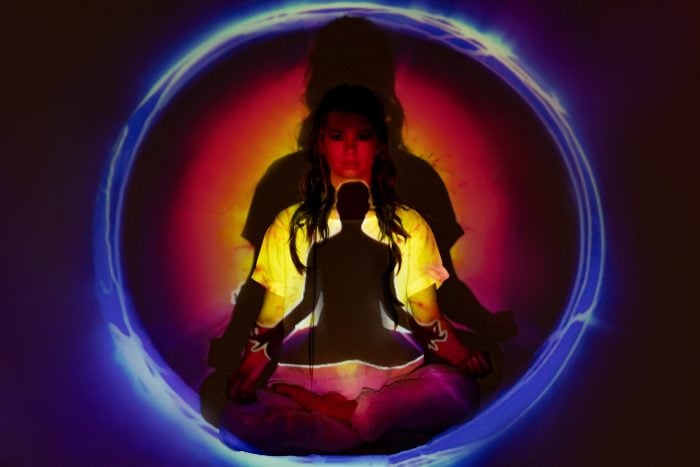Editor’s note: This information intends to help demystify and dismantle some myths and encourage you to use Kundalini for empowerment in your practice and life. If you suspect you have a medical problem, consult your physician. Not all yoga or other exercise practices are appropriate or suitable for every person. Yoga practices are not recommended and are not safe for those with certain medical conditions.
~
Are you familiar with the term Kundalini?
If so, you may associate it with a style of yoga and a brand that originated in the United States during the 70s when a single teacher branded himself as a “guru” from India and then trademarked ownership of the name Kundalini Yoga—as taught by Yogi Bhajan.
I would like to emphasize that Kundalini existed long before this particular teacher and that the practice is still powerful outside of “the brand.” The first reference made was about 2,000 years ago, and I believe there’s a reference to it in the Upanishads—a sacred collection of writings that teaches us how to have a healthy lifestyle through yoga—even before acknowledging the physical practice of yoga.
In my experience of the teachings I have received from different teachers while qualifying as a teacher, my experience has been that any yoga practice aims not to awaken energy but rather to tap into our own true nature and become more attuned. We always aim to practice “nonviolence” toward ourselves and all beings. Can we be kinder, have more patience, and be more forgiving? Seeing these changes take place in ourselves far outweighs an energy experience.
But what is Kundalini?
In the Vedic tradition, the word “Kunda” means fire bowl and “Lini” means the power that dwells within. In Tantra teaching, “Kundal” translates into the representation of coiled potential.
My knowledge of Kundalini is related to the principles common to the beginning of creation, physics, and the ancient view of cosmology. Think of it as a mindfulness practice that encompasses more than just posture. As human beings, we have a limited capacity to receive the totality of universal energy. Let’s assume that we interact with 25 percent of creative energy through our five senses compared to a 75 percent rate of energy unseen and never materialised. Then, we are to believe that there is a significant disparity between the power we utilise and the unknown.
Kundalini is a divine force of inherent goodness that we have access to continuously, even if we aren’t aware of it. It’s the genius of Einstein, the creativity of Picasso, and the messages of love and peace taught by the saints and sages that went beyond limited human understanding.
Anyone can use the awareness of Kundalini in their daily practice of yoga. It should not be a disturbing, overpowering, or spontaneous awakening experience. However, our limited physical, mental, or emotional preparation for using this energy may create imbalances in physiology’s specific energy states and channels. And there are clear stages taught to students to prepare the body and mind.
In combination with asana (yoga posture), the breath, bandha (body locks), sound current, and mudras (hand gestures to direct energy flow), we can develop a direct experience of our limited power of being—and transcend.
While the practice certainly will feel challenging at times, you should never be taught to do something you feel is unsuited for you. In my experience, Kundalini Yoga is taught in classes to beginners and more experienced practitioners who have no serious health concerns.












Read 0 comments and reply